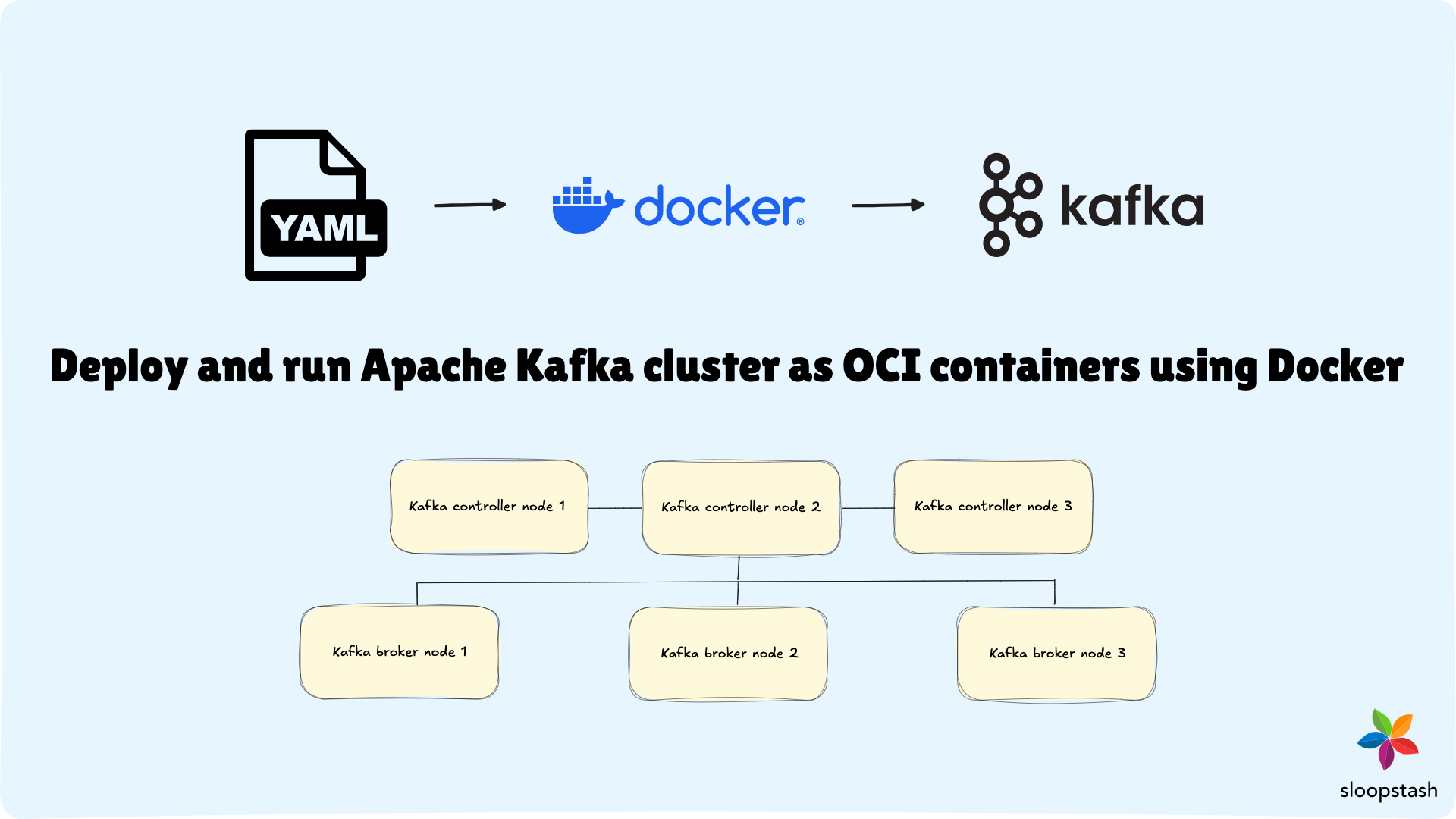
Hello, and welcome back to the SloopStash blog! We’re excited to have you here. Before we begin this post, we kindly ask that you have a basic understanding of either Apache Kafka or Docker. If you’re not familiar with at least one of these topics, you may find this post less beneficial.
Before diving in, it’s important to note that we will focus on deploying an Apache Kafka multi-node cluster as OCI containers using the Docker engine for development and testing purposes. This setup provides a seamless containerized development experience by properly configuring both Docker and Kafka.
The main takeaway is that you can implement this highly customizable Kafka cluster using the Docker engine, enabling it to run on a local developer machine within a Linux VM.
Deploy Docker engine in Linux VM
To effectively run containerized application workloads for development purposes, it’s essential to have a Docker engine operating within a Linux VM.
Start by building a Linux VM that will serve as the host for your Docker engine. Once the Linux VM is built, install the necessary Docker tools and components. This includes downloading the Docker software and configuring it to ensure the Docker engine runs smoothly. With this setup, you will be able to manage and orchestrate your OCI containers seamlessly.
Build Linux VM for Docker engine
Building a Linux VM for your Docker engine is now simpler than ever with the SloopStash Linux starter-kit. This starter-kit automates the entire process of building the Linux VM necessary for the Docker engine by integrating with tools such as Vagrant, VirtualBox, and VMware. Please refer to the documentation below to create the Linux VM required for the Docker engine.
Deploy Docker tools inside Linux VM for containerized development
After you have completed the setup of the Linux VM as outlined in the documentation above, it’s time to install the necessary Docker tools and components required to run the Docker engine within the Linux VM. Please consult the documentation below for instructions on how to install and run the Docker engine inside a Linux VM. Currently, SloopStash does not offer open documentation for customizing and configuring the Docker engine, so be sure to refer to the official Docker documentation for guidance.
Deploy and run Apache Kafka cluster using Docker engine
Once you have deployed a Docker engine within a Linux VM, you can proceed to deploy Apache Kafka cluster nodes inside it. Our SloopStash Docker starter-kit simplifies the process of deploying and managing a multi-node Kafka cluster using the Docker engine.
Getting started with SloopStash Docker starter-kit
We guarantee that implementing a multi-node Kafka cluster will be seamless with our SloopStash Docker starter-kit. This starter-kit includes all the necessary code, configuration, tools, and technical resources for deployment inside a Linux VM. It effortlessly automates and orchestrates the deployment of Kafka cluster nodes as OCI containers using the Docker engine. Please refer to the documentation below to get started with the SloopStash Docker starter-kit.
Deploy Apache Kafka cluster using Docker engine
To deploy a multi-node Apache Kafka cluster using the Docker engine, follow two main steps. First, configure the environment variables required by the Docker client for executing Docker compose YAML templates. Second, run the Docker compose YAML templates to automate and orchestrate the deployment of Kafka cluster nodes as OCI containers. For detailed guidance on deploying and running the Kafka cluster nodes using the Docker engine and Docker compose, please refer to the documentation provided below.
We trust that this blog post on Apache Kafka and Docker has provided valuable insights. Please reach out to us if you’re looking for tailored solutions or training in these kinds of technologies—whether as an individual or for your organization. We’re here to help you succeed!
